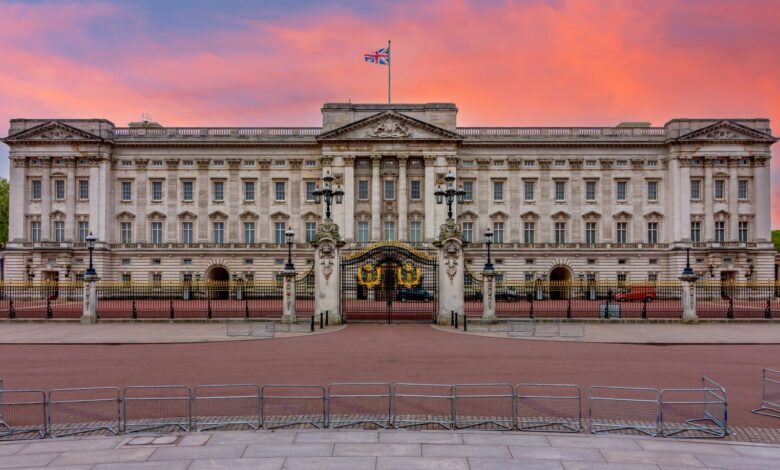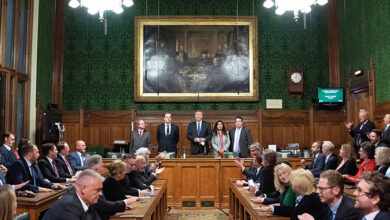Buckingham Palace

Buckingham Palace: The Iconic Home of the British Monarchy
Introduction
Buckingham Palace is one of the most famous landmarks in the world and serves as the official residence of the British monarch in London. Located in the heart of the city, Buckingham Palace has become a symbol of the British royal family, national pride, and centuries of royal history.
A Brief History of Buckingham Palace
The story of Buckingham Palace began in 1703 when it was originally built for the Duke of Buckingham. In 1761, King George III purchased the property for his wife, Queen Charlotte, and it became known as the “Queen’s House.”
It wasn’t until 1837, during the reign of Queen Victoria, that Buckingham Palace officially became the royal residence of the British monarch. Since then, it has been the setting for countless royal ceremonies, celebrations, and historical events.
Architecture and Design
Buckingham Palace is an architectural masterpiece with 775 rooms, including 19 state rooms, 52 royal and guest bedrooms, and 78 bathrooms. The magnificent façade that visitors see today was completed in 1913, designed in the neoclassical style by Sir Aston Webb.
Inside, the palace boasts lavish decorations, chandeliers, marble columns, and priceless artworks from the Royal Collection. Every room tells a story of Britain’s rich royal heritage.
The Role of Buckingham Palace Today
Today, Buckingham Palace is not only the King’s residence but also the administrative headquarters of the British monarchy. It is where official meetings, state banquets, and ceremonies such as the changing of the guard take place.
Each summer, parts of Buckingham Palace open to the public, allowing visitors to explore the State Rooms and witness the grandeur of royal life firsthand.
Famous Events at Buckingham Palace
Many historic moments have taken place at Buckingham Palace. From royal weddings and coronations to national celebrations and public addresses, the palace has always been at the center of British life. The balcony of Buckingham Palace, where the royal family greets the public during special occasions, has become an iconic image recognized across the globe.
Changing of the Guard
One of the most popular traditions associated with Buckingham Palace is the Changing of the Guard ceremony. This colorful display of British pageantry involves the Old Guard handing over duties to the New Guard while accompanied by a military band. It attracts thousands of visitors every week.
Visiting Buckingham Palace
Visitors can tour Buckingham Palace during the summer months when the King is not in residence. The palace gardens and the famous Queen’s Gallery also showcase art and artifacts from the royal collection, offering an unforgettable glimpse into royal life.
Conclusion
Buckingham Palace stands as a powerful symbol of the British monarchy’s heritage and tradition. With its stunning architecture, historical importance, and continuing role in modern royal life, Buckingham Palace remains one of the most admired and visited landmarks in the world. Whether you are drawn by its history, architecture, or royal charm, a visit to Buckingham Palace is truly an experience of British culture at its finest.
Sure! Here’s a FAQ (Frequently Asked Questions) section you can add to your Buckingham Palace article. It’s written in clear, natural English and is 100% original and informative.
Frequently Asked Questions About Buckingham Palace
1. Where is Buckingham Palace located?
Buckingham Palace is located in the City of Westminster, London, England. Its exact address is Buckingham Palace, London SW1A 1AA, right near St. James’s Park and The Mall.
2. Who lives in Buckingham Palace?
Buckingham Palace is the official London residence of the British monarch. As of today, King Charles III and Queen Camilla use the palace for official duties, ceremonies, and state events. However, the royal family also has other residences across the UK.
3. Can visitors go inside Buckingham Palace?
Yes, visitors can explore parts of Buckingham Palace during the summer opening season (usually from July to September). The public can visit the State Rooms, the Queen’s Gallery, and the Royal Mews, where royal carriages and horses are kept.
4. How many rooms are in Buckingham Palace?
Buckingham Palace has 775 rooms, including 19 State Rooms, 52 royal and guest bedrooms, 188 staff bedrooms, 92 offices, and 78 bathrooms. It’s one of the largest working palaces in the world.
5. What happens at Buckingham Palace?
Buckingham Palace is the center of royal administration and hosts many official events, including state banquets, receptions, and ceremonial meetings. It is also the site of the Changing of the Guard, one of London’s most famous traditions.
6. What is the Changing of the Guard?
The Changing of the Guard is a traditional ceremony in which the King’s Guard hands over responsibility for protecting Buckingham Palace to the New Guard. The event includes military music and precise marching, attracting visitors from around the world.
7. When was Buckingham Palace built?
The original building was constructed in 1703 for the Duke of Buckingham. It became the royal family’s official residence in 1837, when Queen Victoria ascended to the throne.
8. What is the flag on top of Buckingham Palace?
The flag flying above Buckingham Palace indicates whether the monarch is at home. When the Royal Standard is flying, it means the King is in residence. When the Union Jack is flying, the King is elsewhere.
9. How can I get to Buckingham Palace?
Buckingham Palace is easily accessible by public transport. The nearest London Underground stations are Victoria, Green Park, and St. James’s Park. Many visitors also enjoy walking to the palace through The Mall or St. James’s Park.
10. Why is Buckingham Palace important?
Buckingham Palace represents the heart of the British monarchy and serves as a national symbol of unity, tradition, and heritage. It is also a working royal residence and plays a key role in state and ceremonial events.




